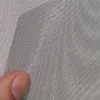The Ultimate Guide To Woven Wire Mesh Filters
Woven wire mesh filters are indispensable components in various industrial processes, offering a versatile solution to filtration challenges. From liquid filtration to gas separation, these filters play a crucial role in ensuring the quality and efficiency of processes across diverse industries. In this comprehensive guide, we will delve into the intricacies of woven wire mesh filters, exploring their applications, types, and key considerations for selecting the right filter for specific needs.
Understanding Woven Wire Mesh Filters
Woven wire mesh filters are made from interwoven wires, creating a grid-like structure with precise openings that allow for the passage of certain particles while retaining others. The weaving patterns can vary, influencing the filtration efficiency, durability, and strength of the mesh. Common materials for woven wire mesh include stainless steel, brass, and other alloys, each offering unique properties suited for specific applications.
Applications of Woven Wire Mesh Filters
Liquid Filtration: Woven wire mesh filters are extensively used in liquid filtration processes across industries such as chemical processing, pharmaceuticals, and food and beverage. They effectively remove contaminants, impurities, and particles, ensuring the purity of liquids.
Gas Separation: In gas filtration applications, woven wire mesh filters excel at separating different gases based on their molecular size. This makes them crucial in processes like air purification, where the removal of pollutants and particulate matter is essential.

Particle Sizing: Woven wire mesh filters are employed for particle sizing in laboratories and industrial settings. The precise openings in the mesh allow for accurate separation and classification of particles based on size.
Extruder Screens: In plastic and rubber processing, woven wire mesh filters are commonly used as extruder screens. These screens prevent impurities and contaminants from entering the extrusion process, ensuring the quality of the final product.
Types of Woven Wire Mesh Filters
Plain Weave: The most common type of weave, plain weave, is simple and strong. It features a crisscross pattern where each weft wire passes over and under an individual warp wire.
Twill Weave: Twill weave introduces a diagonal pattern, providing increased strength and stability compared to plain weave. This type of weave is suitable for applications requiring a balance between strength and filtration efficiency.
Dutch Weave: Dutch weave is characterized by a combination of thick warp wires and fine weft wires. This creates a dense filter with high filtration precision, making it ideal for applications where fine particles need to be captured.
Selecting the Right Woven Wire Mesh Filter
When choosing a woven wire mesh filter, several factors must be considered:
Material: Select a material based on the chemical compatibility, temperature resistance, and corrosion resistance required for the specific application.
Weave Type: The weave type influences the filtration efficiency, strength, and stability of the mesh. Choose the weave that best suits the intended purpose.
Mesh Size: The mesh size determines the size of particles that can pass through the filter. Consider the desired level of filtration and the characteristics of the substances being filtered.
Conclusion
Woven wire mesh filters are integral components in diverse industries, providing effective solutions for liquid filtration, gas separation, and particle sizing. Understanding the different types of weaves and considering factors such as material and mesh size are crucial in selecting the right filter for specific applications. With their versatility and reliability, woven wire mesh filters continue to be indispensable in ensuring the quality and efficiency of industrial processes.

Comments